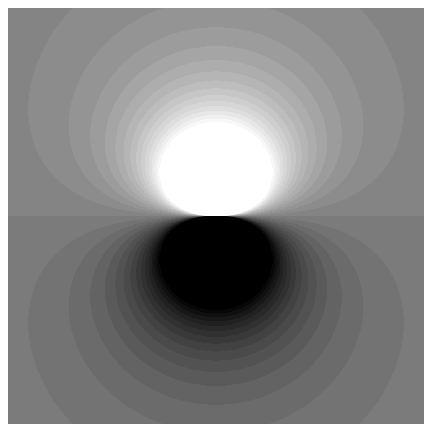|
Chapter |
In our electron model,
we no longer regard the electron as a point-like particle. Similar to the
electron’s electric charge, which has continuum distribution inside of the
electron, we make one of our basic assumptions here that the magnetic charge
has continuum distribution inside of the electron. The distribution equation is
as follows:
![]() (3.1)
(3.1)
By
integrating the magnetic charge density equation (3.1), we can get the volume
magnetic charge:
![]() (3.2)
(3.2)
In
which ![]() thus
thus
![]() (3.3)
(3.3)
Therefore,
![]() (3.4)
(3.4)
Thus:
 (3.5)
(3.5)
Consequently,
![]() (3.6)
(3.6)
Equation
(3.6)
is the electron magnetic charge space distribution equation.
From
the above equation (3.6), the radial part of the distribution is
a kind of cumulative
gamma distribution function *[B].
From equation (3.6), we find out that:
When ![]() , Thus:
, Thus:
![]() (3.7)
(3.7)
From
equation (3.7), we learn that within the sphere of any radius r, the magnetic
charge total is always zero.
We find out that inside
of the electron, within the sphere of any radius r, the magnetic charge as a
whole is always zero, even though magnetic charge distribution exists inside of
the electron.
When ![]() , thus:
, thus:
![]() (3.8)
(3.8)
The above equation (3.8) is the electron
north pole area magnetic charge distribution within the sphere of radius r, from
which we can see the magnetic charge distribution is also the cumulative gamma distribution [B].
When ![]() thus:
thus:
![]() (3.9)
(3.9)
Which
shows us that the electron has one unit negative magnetic charge ‘g’ in the whole north
pole
area (![]() ).
).
Inside the electron, the whole area of the north pole, has one unit negative
magnetic charge ‘g’.
As we know, the electron
has total zero magnetic charge, so the electron whole south pole area (![]() ) has one unit positive magnetic charge ‘g’.
) has one unit positive magnetic charge ‘g’.
Inside
the electron, the whole area of south pole has one unit positive magnetic
charge ‘g’.
Reference
Quantised singularities in the electromagnetic field
PAM. Dirac
Proc. Roy. Soc. London A 133, 60, 1931
The theory of magnetic monopoles
PAM. Dirac
Phys. Rev. 74, 817-830 (1948)
A new derivation
of Dirac's magnetic monopole strength
P V Panat
Eur. J. Phys. 24 111-114 (2003)
Symmetry
in electrodynamics: A classical approach to magnetic monopoles
W. B. Zeleny
Am. J. Phys. 59, 412 (1991)
Magnetic
charges in special relativity
I. Adawi
Am. J. Phys. 59, 410 (1991)
Angular
momentum of a charge–monopole pair
K. R. Brownstein
Am. J. Phys. 57, 420
(1989)
Quasiclassical
quantization of the magnetic charge
P. Hraskó
Am. J. Phys. 45, 838 (1977)
I. Adawi
Am. J. Phys. 44, 762 (1976)
|
What
is the electron spin?
ISBN 0-9743974-9-0 Copyright © 2003 Gengyun Li All rights reserved http://www.electronspin.org |
